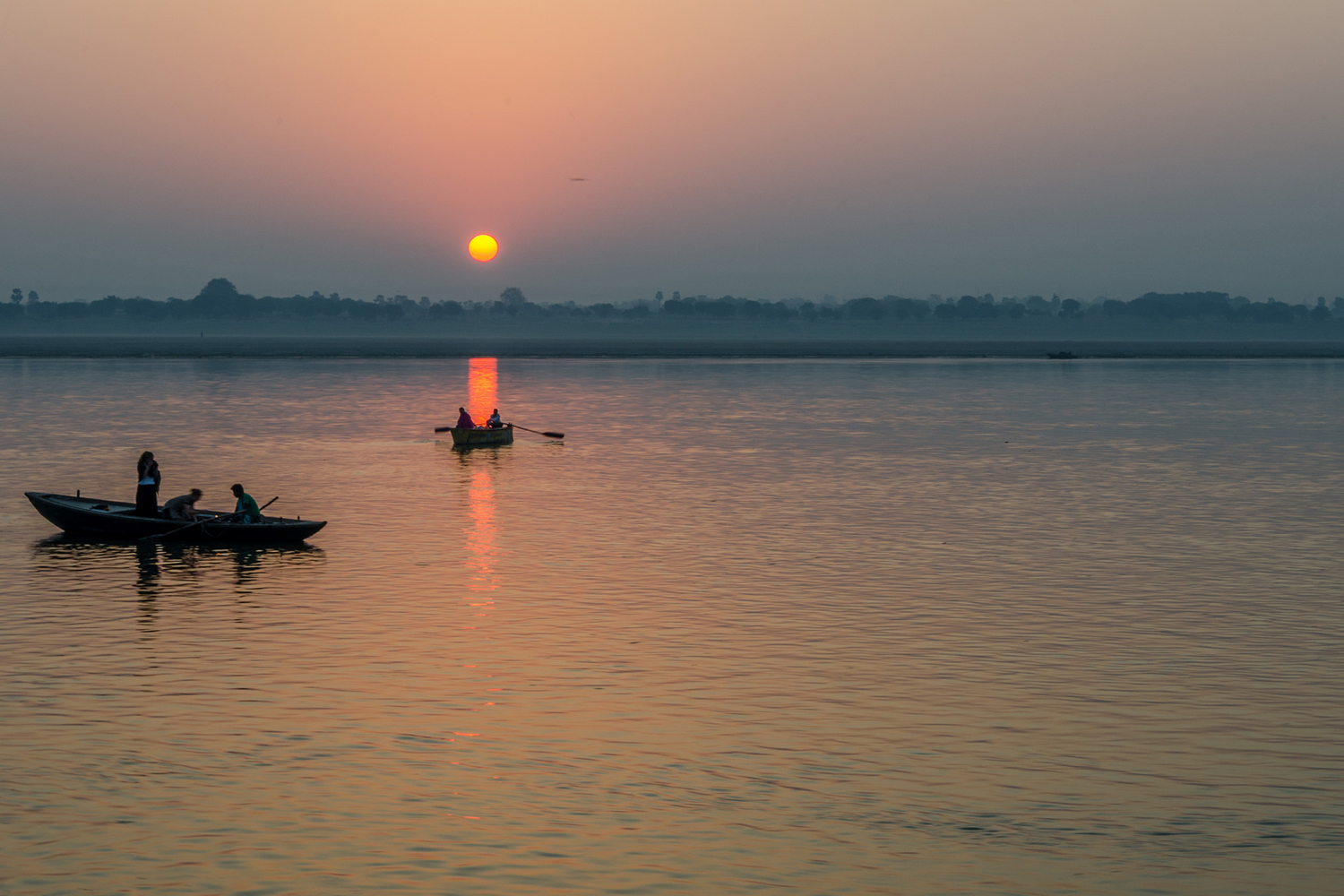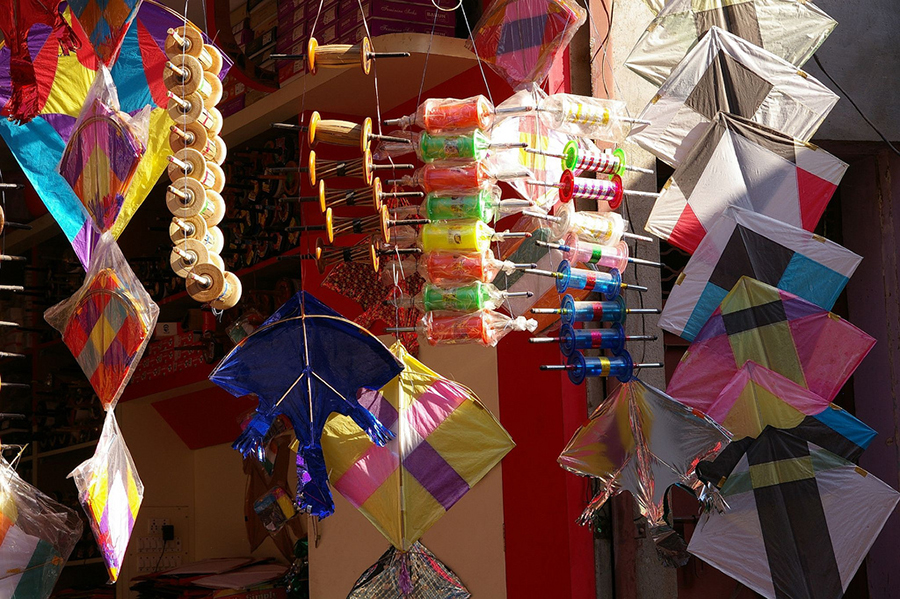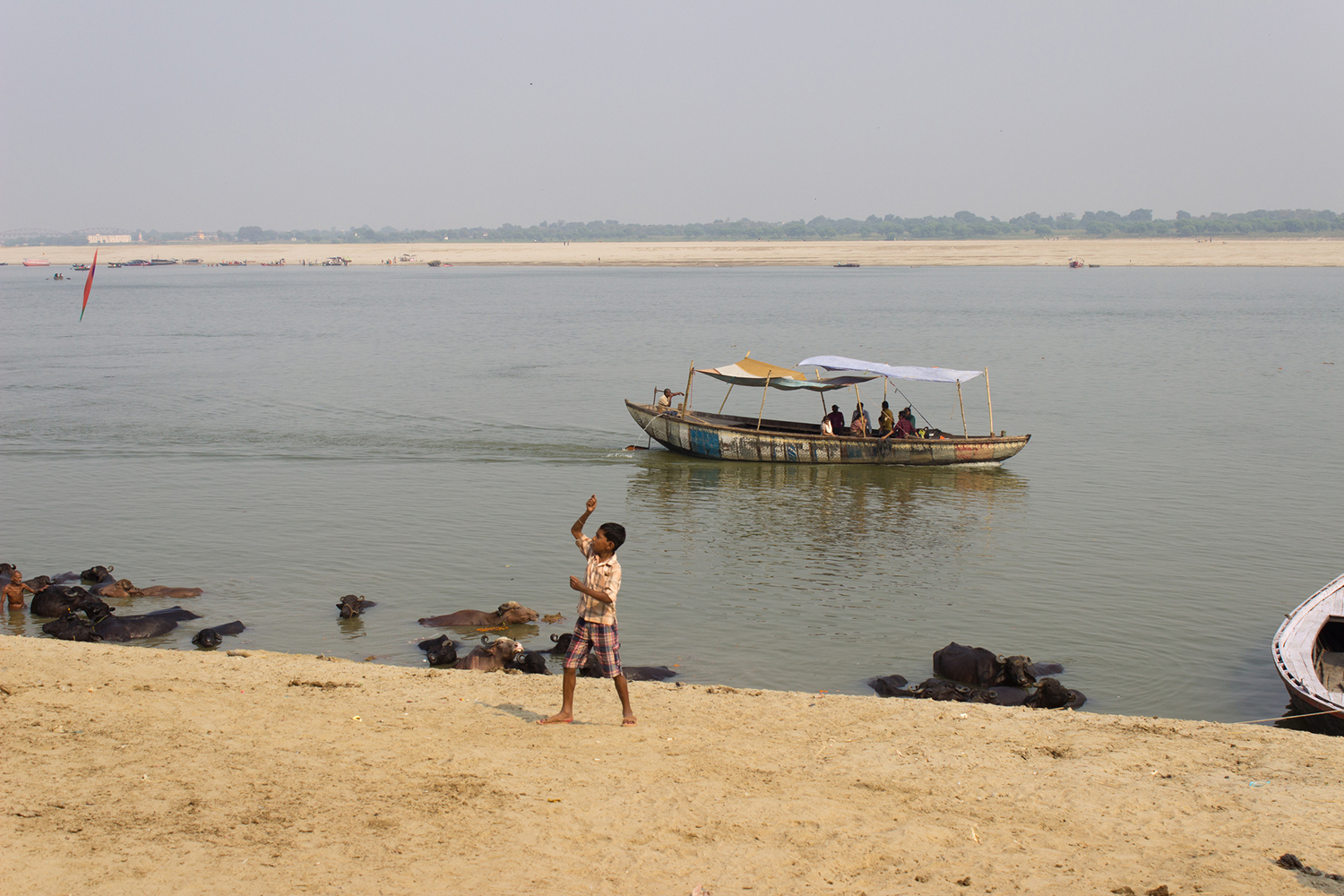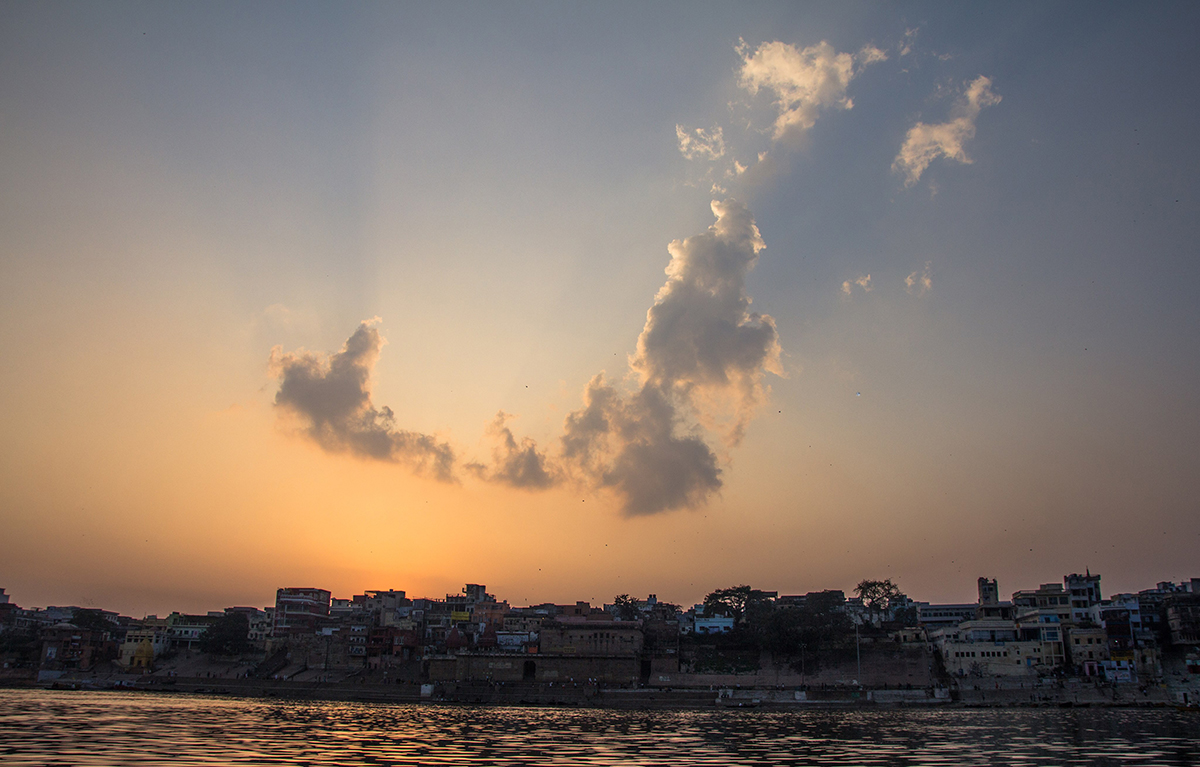Varanasi is one of those places where life comes at you with all its limbs, wielding many wonders, much confusion and a lot of fun. It’s home to a beautiful tradition of kite fighting, practiced by the young and old alike on the sandy banks of the Ganges.

Sunrise on the Ganges (Photo: Indicpeace via Flickr)
My eyes open to one of the cave-like rooms I’m renting for a week on the water. The walls of the place are as tired of being painted as the owner is of repainting them. They shed layers of blue and white and yellow as I brush past; the painted dust skits through air that’s breathed into the room as I open the door to the River Ganges, right on our doorstep in Varanasi.
Smog from the previous nights clings to the morning fog but the sky soon turns from the hues of a ripened peach into the refreshing blues of a beautiful day. The skyline is unique in Varanasi.
The other side of the river is all sand; terrain not fit to build structures that would cut up the horizon. Instead it’s lined with the silhouettes of kite flyers and their kites. People who ferry across the river to spend the afternoons flying handmade creations in the air and fight to cut the strings of other kite flyers. To newly opened eyes the shadows of these traditional toys look like fidgety birds, constantly chasing their tails. But on closer inspection you can see the familiar diamond shape crafted from bamboo and canvas, a perfect wind-reliant design which has never needed to change.
At lunch I talk to Dennis, who spends his days playing cricket on the concrete banks of the river with the local kids.
‘We’re going kite flying’ he tells me, ‘Carlos will take us, do you want to come?’
I look long and hard into my slowly disappearing lassi and realise that I have not a single plan for the day, so I say yes. We finish our cereal, lace up our boots and go to find Carlos by the water. He tells us that before we can travel across the water we have to pick up the kites from his friend.
We follow Carlos, a four foot three, twelve year old, Varanasi local legend through the concrete maze for an hour, kept awake and engaged in the heat by the splatter of human activity at every corner. Silk-soaked walls and coffee-stained floors, the waste of the chaos lining the pavement along with the confetti from week-long weddings and shops selling their finest findings from the surrounding area.
We pass a goat wearing a jumper, get doused in the smells of frying ghee, paratha, zingy lime and musty turmeric. The yellows and greens and pastel pink which hide the greys of concrete walls melt into the same realm as the smells and we try out every instrument we’ve never see before in the shops on the way. I like the Tabla and Carlos is already a natural on the guitar.

Kites for sale (Photo: Andrea Kirkby via Flickr)
The kite-maker
Finally we cross about six lanes of traffic, skid on a soggy samosa dropped by someone in a hurry, trip up the kerb and just miss crashing into the gola stand (crushed ice and juice) before turning a corner and arriving at our destination.
The shop is the size of cupboard and every wall is lined with dark green shelves that reach the ceiling. A blue eyed, silver haired woman with delta lines running from the corner of her eyes to the corners of her smile greets us knowingly. She is the one who makes the kites, and slowly, carefully she puts one foot, then the other, up onto the wooden stool to reach the top shelf. She hands us three, five, ten, fourteen and eventually twenty kites from her stool.
She gives us a lesson in how to fix a broken kite that isn’t totally beyond repair. Delicately she peels a slither of tape off a gigantic reel that lies on a rusty iron stand behind her. Using her little finger, she pushes her glasses an extra centimetre up her nose as she narrows her focus, and places the tape down onto a splintered piece of wood without laying a single crease in the material.
‘Tike’ she says, and nods to each of us in turn, catching the eyes of the people who will play today thanks to the work of her hands. She wraps the kites in tissue paper, charges us 100rs (£1) for her efforts, and sends us on our way.

Kite flying on the banks of the Ganges, Varanasi (Photo: Matt Zimmermann via Flickr)
Kite! Fight!
The next stop is the river’s edge, where Carlos’ friend is waiting, contemplating everything all at once. He looks at his bidi before he looks at us and I see him become excited at how this day might pan out. On seeing the anticipation on our faces he uncrosses his legs, blows a final puff and loosens the rope that stops his boat from floating across to the other side of the sand. Gesturing with a tilt of the head he send us up to the front of the rig where Carlos perches like a cat ready to pounce.
A ten minute float across the water lands us on the silty banks where there are already about fifty people with eyes on the sky focusing on the path their kites will take. We unravel the strings, making sure not to cut our fingers on the sharp synthetic thread we use to leash up the paper creatures.
Two minutes after they’ve been sent into the sky the battles begin – one of the kids flying next to us is looping his kite through the air, as soon as the string hits ours, both kites begin to spin, the winner is the one who can cut the string of the other and this guy’s technique is unparalleled. He’s moving his hands like he’s unpicking a tangled ball of wool in fast motion, and his eyes move from the kites to the strings to us. With 2 or 3 sharp pulls something breaks, our kite drops and his soars right back up into the air – the champion boosted into the space above and the loser dropped with a thud onto the sand.
It becomes clear why we needed to buy twenty kites. This was round one and now we need to get a new one into the sky. Ten seconds after we have lift-off someone else is after us, on the defensive once more we try to fight back but beginners have nothing on the years of training in this technique that the local kids have.
We pass the next one to Carlos, who instantly goes after our neighbor and within about ten seconds has taken him down. He strings up another kite, moves about twenty metres across the sand and tackles one kite which then launches itself into another so he takes down two in one. People notice, heads nod and shake and we greet him with cheers and hugs as he comes back. He climbs onto Dennis’s shoulders to celebrate and someone has a speaker for music so now its not just the kites dancing around above the sand.
We eat some too sweet sweets and wash it down with some too sweet drinks and then carry on whittling through the kites we’d bought in the morning. Some people are painting theirs and it’s a sight to see the pens and paints doodle patterns over the canvas as other kites doodle through the air.

The Varanasi skyline on the way home (Photo: Dennis Schupf)
The time has spun past us as quick as the most practiced kite fighter and the peachy hues are beginning to return to the sky. The birds are beginning to settle on the sand, picking at worms and other tiny eyelash-sized insects. The kindling on the horizon begins to crackle and burn up just in time for the sun to ooze its orange all over the sky. The skyline is different from this side of the river. Pyramid-shaped temples like wedding cakes sit behind smoky stacks and 12 storeys of balconied buildings perch on varying levels up the steps on the banks of the water.
We are the last people on the sand and we watch as the boats glide over the glassy surface of The Ganges back to their fiery home on built up land. It has been a beautiful day spent on the sands, where no building can survive but where children, the elderly, families, couples, individuals, all come to play a game of flight, where for a few brief moments we become the characters we send into the sky.